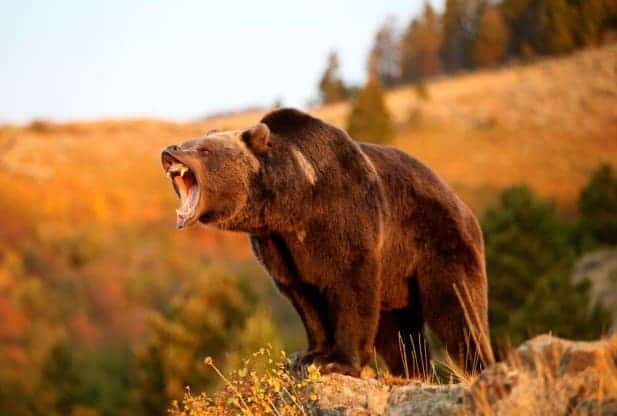
Photo: redorbit.com
Grizzly bears are fat, I mean really fat. They have to in order to survive through winter hibernation and long-lasting periods when there isn’t any game or food about. What’s odd is that even when they’ve stuffed themselves plenty with fat (a grizzly can gain 100 pounds prior to hibernation), they stay metabolically healthy and free of diabetes. Such an extreme weight gain would strike most mammals, including humans, with disease. Researchers at the Washington State University Bear Center in Pullman have found how the grizzlies do it: a key protein found in fat cells gets shut down. The findings might help transfer this mechanism to humans via a drug to prevent weight gain related metabolic illnesses.
Grizzlies shut down a protein to protect them from metabolic diseases
When normal people gain weight, their liver, fat and muscle cells become less sensitive to the hormone insulin, paramount to regulating sugar levels in blood. The increased resistance prompts the body to inject more insulin. In turn, the high insulin level in the blood makes it harder to breakdown fat cells, so a vicious cycle can ensue. If left unchecked, the loop can cause full-blown insulin resistance or diabetes. For life.
Bears are cool, though. They can gobble up as much fat as they want without fear of becoming diseased or looked down upon by other bears because they’re fat. Bears don’t have prejudice – they’re all fat. And this was exactly what appealed to Kevin Corbit, a senior scientist at Thousand Oaks, California–based drug company Amgen.
Him and colleagues at Washington State recorded blood sugar levels, insulin levels, body weight, and other markers of the metabolism in six captive grizzly bears before, during, and after hibernation—in October, January, and May. They found that even after gaining more than 100 pounds prior to hibernation, the bears still retained normal insulin sensitivity. Then only resistance was recorded during hibernation, but this was temporary and became completely reversed come springtime. “This type of physiology had never been described before and was completely opposite what’s seen in humans,” Corbit says.
[RELATED] Type-1 diabetes cured in animals, humans might not lag far behind
Upon closer inspection after analyzing many key molecules in liver, fat and muscle cells, the researchers found that a protein called PTEN was controlling insulin sensitivity or resistance independently of weight gain. This protein is virtually the bears’ secret to their winter time survival. Without the protein, the bears wouldn’t be able to store as much sugar in their bodies.
How would this apply to humans? We don’t know yet
Before bears hibernate, their PTEN protein becomes shut down allowing them to maintain insulin sensitivity despite weight gain. If the same pathway could be shut down in humans it might prevent or even treat diabetes. Interestingly, he points out, a previous study found that people missing one gene for PTEN production are less likely to develop metabolic or cardiovascular disease even as they gain weight.
[ALSO READ] Healthy habits dramatically reduce risk of diabetes
As always, animals models are not to be trusted. Less than 40% of medical research on mice, for instance, can be transferred to humans. Also, there’s always the possibility of doing more harm than good. Shutting down PTEN in humans might avert diabetes, but it might also cause excessive weight gain.
“You might create a situation where patients are metabolically healthy but you’re trading that for joint problems and back problems and arthritis,” says Abhimanyu Garg of the University of Texas Southwestern Medical Center in Dallas.
Findings appeared in the journal Cell.









